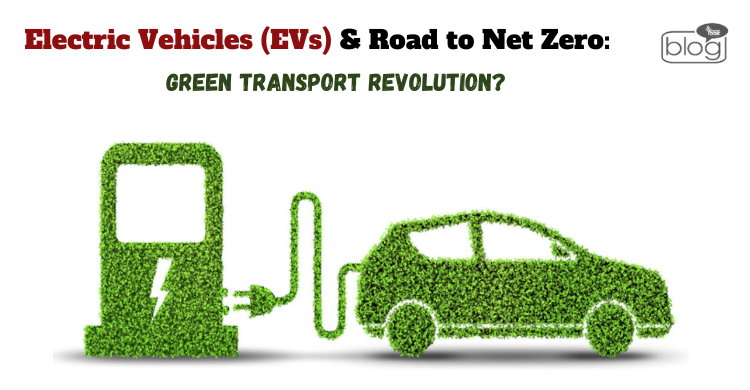In the Green Revolution, EVs are a significant development in the transportation sector. But is it enough on the Road to Net Zero? Firstly, we have to know about EVs!
EVs mean electronic vehicles, which come in various variants, including battery electric vehicles (BEV), hybrid electric vehicles (HEV), and plug-in hybrid electric vehicles (PHEV).
Similar to solar energy, green energy is being investigated for light vehicles such as three-wheelers and rickshaws because of its low energy density. But because of their zero emissions and ability to reduce noise pollution, electric vehicles (EVs) are regarded as the transportation system of the future.
EVs eliminate the gearbox found in traditional cars and offer high pickup and low operating and maintenance costs. Nevertheless, they encounter difficulties such as expensive acquisition costs, insufficient charging stations, extended charging durations, and restricted range.
As energy-storing technology advances, EV prices will come down to an affordable level. EVs are anticipated to emerge as a practical alternative to the current transportation system as they replace conventional automobiles.
Will consumers have to pay a hefty price for the anticipated EV adoption requirements?
Since electric vehicles (EVs) are frequently less expensive than internal combustion engines (ICE) in some places, consumers shouldn’t be overburdened by their high initial costs. In the EU, this is the case for medium-sized cars, and by 2024 and 2026, respectively, it will be the case for small and large cars. However, battery costs, which have decreased by 89% between 2010 and 2020, play a major role in determining the initial purchase cost. According to industry experts, EVs in Europe’s light vehicle segments will achieve upfront price parity between 2025 and 2027 as a result of additional price reductions. Another issue is the availability of charging infrastructure since private markets might not have many incentives to make investments.
Is the extra load needed for widespread EV adoption manageable for electrical grids?
It is anticipated that the number of people using electric vehicles (EVs) will rise from 10 million in 2020 to 120 million in 2030, with an additional 210 million required for sustainable development. Installed charging capacity must rise from 0.1 TW to 1 TW or 1.7 TW to handle this expansion. A 25 TWh increase in 2020 and a 330 TWh or 550 TWh increase in 2030 would be necessary to achieve this. The necessary additional power demand in a net-zero scenario with 100% EVs could reach 8,500 TWh. To accommodate 20 million EVs by 2030, the US grid’s capacity would need to grow by more than a third. According to a 2020 study, $75 million in investments in the power sector.
Are supply chains ready for a rapid transition to EVs?
- To get ready for the quick switch to electric vehicles (EVs), supply chains must invest heavily. The supply chain is impacted by three main issues: the scarcity of semiconductors, the cost and accessibility of battery raw materials, and geopolitical issues.
- Since EVs need more than twice as many semiconductors as ICE vehicles, the demand for semiconductors is already slowing down EV production. With the demand for lithium-ion batteries from EVs predicted to rise globally by 2030, battery raw material costs and availability are also a concern. This shift will lead to a significant increase in metal demand, with cobalt demand expected to triple, lithium ninefold, copper tenfold, nickel and aluminum fourteenfold.
- There are geopolitical issues as well; Chile has nearly half of the world’s lithium reserves, but only a small portion of that is produced there. Claims of fraud, corruption, and human rights abuses, including child labor, have dogged cobalt production in the Democratic Republic of the Congo (DRC). As a result, large manufacturers like Apple, Google, Microsoft, Dell, and Tesla are being sued in a class-action lawsuit.
- With around 80% of the world’s raw material refining and battery cell manufacturing taking place there, China currently controls important supply chain stages. To promote supply security, foster competition, and support innovation and price reductions, EV and component manufacturing need to become more globally competitive.
How much investment will be needed, and where will it come from?
Automakers anticipate spending more than $500 billion on EVs and batteries by 2030, reflecting the sharp rise in global investment in these technologies. Businesses like FedEx, DHL, Amazon, and Walmart have pledged to electrify their entire fleet by 2040 or 2050 or switch to a fully electric fleet by then. These pledges, which are supported by specific orders—such as 100,000 EVs from Rivian by Amazon and 100,000 from Tesla by Hertz—are sending strong signals to the market.
To read more blogs like this, click here
Writer
Mafroha Somiya
Intern, Content Writing Department
YSSE

